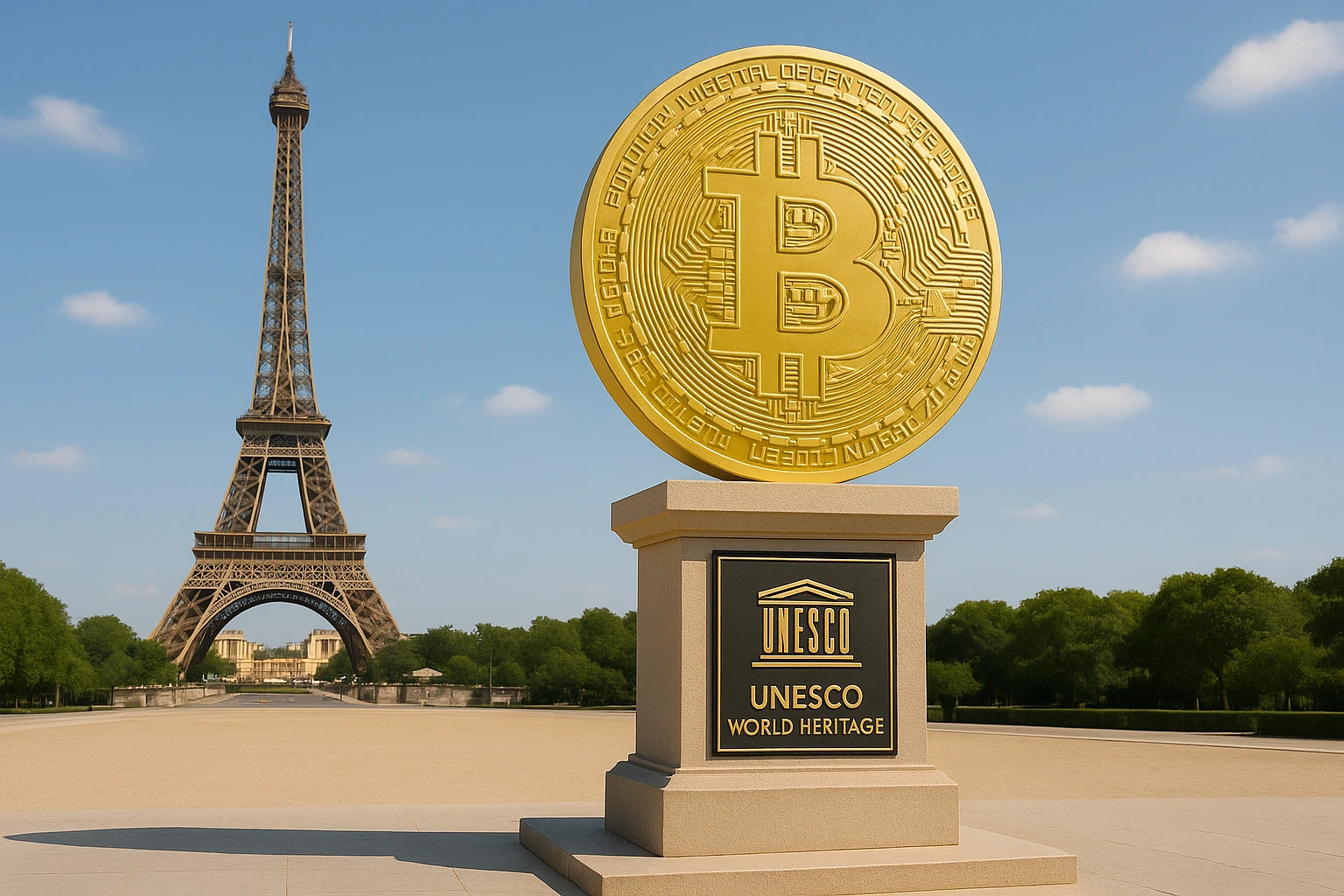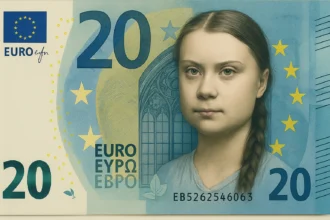In an unprecedented move that has left both the financial world and cultural institutions scratching their heads, UNESCO officially declared Bitcoin a World Heritage Site during a ceremony that might well go down in history—or at least in satirical memes. The event, held in front of a gigantic, rotating holographic Bitcoin statue that sparkled under the Dubai sun, was streamed live to 146 countries and countless crypto Twitter feeds. As the price of Bitcoin soared to a jaw-dropping $111,673.28 on May 22—its all-time high for 2025—officials gathered to honor what many are calling “the digital currency that transcended borders, taxes, and logic.” The decision was apparently cemented after diplomats, convinced by a well-timed “buy the dip” rally, decided to elevate Bitcoin from internet joke to cultural monument.
UNESCO Declares Bitcoin a World Heritage Site in Hilarious Ceremony
The ceremony was as flamboyant as a blockchain fork. Officials clad in tuxedos and crypto-themed accessories gathered around a hologram that displayed Bitcoin in all its pixelated glory, spinning and shimmering in an endless dance of digital gold. UNESCO’s spokesperson, Dr. Sylvia Chainlink, announced, “With a closing ATH of $111,673.28, Bitcoin is no longer just a currency—it’s a digital cathedral, a monument to the absurdity and genius of decentralized finance.” The crowd responded with a mixture of applause and enthusiastic laser eye gestures, while social media exploded with memes comparing Bitcoin to ancient ruins and modern art. The declaration was, of course, punctuated by the unveiling of a massive, shimmering Bitcoin logo, which rotated majestically as a choir of digital enthusiasts sang “HODL, HODL, HODL” in unison. The moment was surreal, blending the gravitas of UNESCO with the lunacy of meme culture, effectively cementing Bitcoin’s place as a global cultural phenomenon.
In the days following, historians and internet trolls alike debated whether the decision was satire or a sign of the end times. Some took it seriously, claiming that Bitcoin’s “cultural significance” lay in its ability to inspire both financial freedom and endless memes. Others pointed out that this move might just be UNESCO’s way of staying relevant in a world where digital assets are faster than traditional monuments. The ceremony also featured a surprise performance by a drone light show spelling out “Satoshi Lives,” and a virtual reality tour of “failed exchanges” and “lost seed phrases,” turning the whole event into a carnival of crypto nostalgia. Meanwhile, the crypto community enthusiastically embraced the honor, with a few calling for “cryptocentric pilgrimage routes,” including a hike from Wall Street to the volcanic mines of El Salvador—because what better way to honor digital gold than with sweat and volcano fumes?
Global Celebrations Include Holographic Bitcoin Statue and NFT Souvenirs
The global celebrations kicked into high gear as nations announced their own Bitcoin-themed festivities. In Dubai, a massive holographic Bitcoin statue, complete with rotating features and laser eyes, became the centerpiece of the city’s skyline, shining like a digital lighthouse for crypto pilgrims. Tourists flocked to the site, with one tourist proudly declaring, “I came for history. I left with laser eyes and a hardware wallet”—a sentiment echoed by many who saw the event as a spiritual awakening wrapped in blockchain chic. Across the globe, museums curated exhibits of “failed exchanges,” “lost seed phrases,” and “hilarious FOMO moments,” turning financial disaster into educational entertainment. To commemorate the occasion, UNESCO announced the launch of “Proof of Pilgrimage” tokens, which could be earned by visiting designated sites like the Bitcoin mining tunnels and the original Satoshi Nakamoto statue (a small, unassuming fridge magnet).
In addition to physical and virtual tours, the celebration introduced NFT souvenirs and “On-Chain Memories”—digital tokens that serve as proof of participation. These NFTs range from digital trading cards of Satoshi’s mysterious face to animated GIFs of Bitcoin’s rollercoaster ride. A new “Bitcoin Pilgrimage Route” was also unveiled, guiding enthusiasts from the heart of Wall Street, through the crypto-verse, all the way to the volcanic mines of El Salvador—because nothing says “sacred” like sweating it out on a mountain and praying to the blockchain gods. As the festivities continued, social media buzzed with hashtags like #BitcoinHeritage and #CryptoPilgrims, while memers joked that “the blockchain is now the world’s most sacred site”—a humorous nod to the absurdity of elevating digital currency to the realm of world heritage. With NFT souvenirs, on-chain tokens, and a ceremony that defied conventional logic, the world watched as Bitcoin was—and perhaps always was—more than just a currency; it was a cultural phenomenon that had finally received its “digital cathedral” status.
As the dust settles on this hilariously improbable UNESCO declaration, one thing is clear: Bitcoin’s journey from obscure digital experiment to world heritage site is a testament to how the line between reality and satire continues to blur in the age of crypto. Whether you see it as a joke or a monument to human ingenuity, the ceremony has undoubtedly secured Bitcoin’s legacy—not just as a financial asset, but as a cultural icon painted in holographic gold and NFT pixels. So, whether you’re a HODLer, a tourist, or just someone who enjoys a good meme, one thing’s for sure: the blockchain has officially entered the annals of world history, and the world will never look at the digital currency the same way again.










